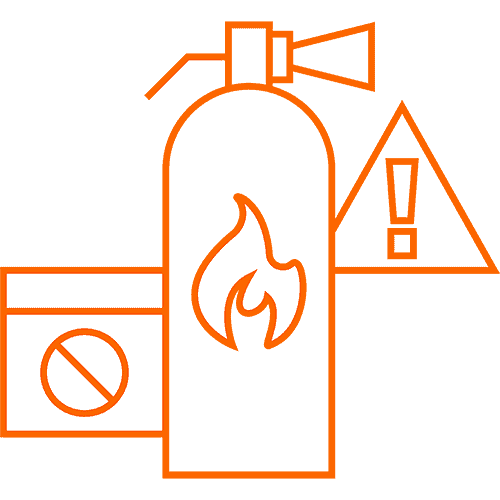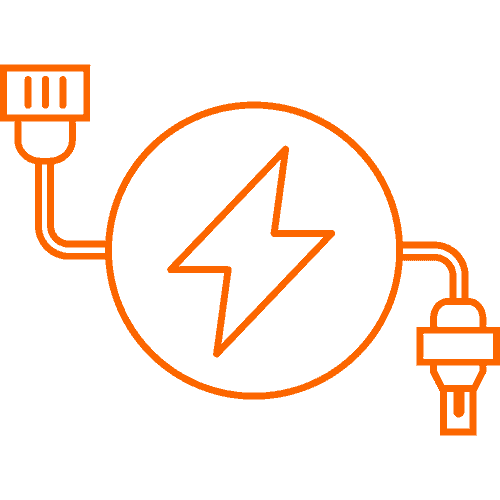
Understanding the Different Types of Control Valves in Heavy Equipment

Understanding the Different Types of Control Valves in Heavy Equipment
Reading time: 6 min
Introduction to Control Valves
Hydraulic systems are essential to the design of heavy equipment like dozers, skid steers, loaders and excavators. By converting hydraulic energy into mechanical work, a machine’s hydraulic system empowers it to perform incredible feats of power and precision.
Within the hydraulic system, control valves determine the direction, pressure and flow of hydraulic fluid. Whether it’s lifting, pushing or digging, control valves ensure that each action is performed with the precision required for the task at hand.
The relationship between control valves and other components of the hydraulic system is straightforward. While pumps generate fluid pressure, control valves channel the fluid between the various components, regulating its pressure and flow.
The interplay between control valves and the various parts of the hydraulic system is crucial for the seamless operation of heavy equipment, underscoring their importance.
In this guide, we’ll cover some of the main functions of control valves in heavy equipment hydraulic systems. Understanding these key components will help you maintain your machine’s hydraulic system, thereby improving its efficiency and extending its lifespan.
The Role of Control Valves in Construction Equipment Hydraulic Systems
Control valves are intricate, necessary components located in construction equipment hydraulic systems. By acting as the conduits through which hydraulic fluid is directed to the machinery’s essential areas, these valves regulate its flow, pressure and direction.
The precision with which these valves operate is essential to their function. The exact positioning of a load, the smooth transition between movements and the overall operational efficiency of the equipment depend on the accuracy of the control valves.
This precision directly impacts the safety and efficiency of construction projects. Properly functioning valves ensure that machinery operates smoothly and predictably, minimizing the risk of accidents caused by unexpected movements or failures.
Control valves regulate the movement and force of larger components by controlling the flow rate and pressure of the hydraulic fluid. This allows operators to execute delicate maneuvers and apply significant force with great accuracy. For example, when a control valve directs hydraulic fluid at a high flow rate to a cylinder, it extends quickly, moving the attached load with it.
Conversely, a reduced flow rate results in slower movement, allowing for precise positioning. The ability to adjust these parameters is essential for optimizing the equipment’s performance and ensuring operational safety.
When a control valve malfunctions or fails, the consequences can range from reduced efficiency and precision to complete operational failure. A malfunctioning valve may cause erratic movements or an inability to apply the necessary force, severely hampering the equipment’s functionality.
In the worst-case scenario, a failing valve could lead to uncontrolled movements, posing significant safety risks to operators and bystanders alike. Therefore, maintaining these valves in peak condition is necessary for the safe and efficient operation of construction equipment.
Control Valves’ Relationship with Other Components
Control valves serve as connecting components of the hydraulic system, facilitating collaboration between pumps, motors and hydraulic cylinders. These valves direct the flow of hydraulic fluid from the pump, modulating its pressure and volume as it moves toward cylinders.
The flow rate and pressure stability of hydraulic fluid are critical to the operation of heavy equipment. Flow rate dictates the speed at which a machine component moves. As an example, a higher flow rate to a hydraulic cylinder results in faster extension or retraction, directly affecting the equipment's operation speed.
Pressure stability, on the other hand, ensures that the force exerted by hydraulic motors or cylinders remains consistent, crucial for carrying out tasks that require precision and control, like lifting heavy loads or digging at a steady pace.
Types of Control Valves in Hydraulic Systems
Heavy equipment hydraulic systems feature a wide array of valve types. Here's a closer look at some of the key types of control valves and their specific functions within these systems.
Pressure Control Valves
These valves are essential for maintaining or limiting the hydraulic fluid's pressure within the system to prevent damage to the components. They automatically adjust the flow rate to control pressure.
Relief Valves
Relief valves are a type of pressure control valve that act as a safety mechanism to prevent excessive pressure build-up by redirecting excess hydraulic fluid back to the reservoir. They are critical for preventing potential damage or failure of hydraulic components.
Spool Valves
Spool valves are a type of directional control valve. They are responsible for directing the flow of hydraulic fluid to specific parts of the equipment, switching the path followed by the fluid as it flows through the system.
Check Valves
Acting as one-way gates, check valves ensure that hydraulic fluid flows in only one direction, preventing backflow which could lead to system failure or loss of control.
Ball Valves
Known for their simplicity and durability, ball valves control the flow of hydraulic fluid through a rotary ball design with a bore.
Flow Control Valves
These valves regulate the flow rate of hydraulic fluid, allowing for precise speed control of cylinders. Adjusting the flow rate enables operators to manage the speed of movement of heavy equipment components, essential for tasks requiring a high degree of precision.
Maintenance of Hydraulic Control Valves
Maintenance of hydraulic control valves is a crucial aspect of hydraulic system maintenance. Regular inspection schedules vary depending on usage intensity and environmental conditions, but a general guideline is to inspect valves at least annually.
During these inspections, look for signs of wear and tear, corrosion, leaks and any deformities that might impair the valve's functionality. Identifying and addressing these issues early can prevent more significant problems down the line.
Cleanliness within the hydraulic system is an extremely critical part of keeping the system functioning well. Hydraulic system contaminants can cause severe damage such as clogging and abrasion, which can lead to system failure.
Control valves can be points of entry for contaminants if not properly maintained. At the same time, control valves regulate the flow and pressure and can help minimize the impact of any contaminants that have entered the system.
Common troubleshooting issues related to control valves include erratic operation, leaks and a failure to actuate properly, often traced back to contamination, component wear or improper calibration. Regular maintenance and inspections are key to identifying these issues before they escalate.
The need for valve replacement depends on the severity of wear or damage and the operational conditions. Some valves may last the lifetime of the equipment with proper care, while others might require replacement every few years. Keeping hydraulic fluid clean and monitoring system pressure can significantly extend the life of control valves, underscoring the need for a well-planned maintenance schedule.
Final Thoughts
Control valves play a key role in heavy equipment performance, safety and efficiency. Their ability to direct, regulate and modulate fluid flow ensures that equipment operates smoothly, responding precisely to the operator's inputs.
The EquipmentShare Shop carries an array of OEM and aftermarket valves. Search the collection to find the components your machine needs. Don’t see exactly what you’re looking for? Reach out to our dedicated parts experts and get personalized assistance.
Back to Parts In Depth
Are you signed up for our newsletter?
We'll send you a monthly email covering everything from specialty parts to machine overviews, packed with tons of knowledge from our industry pros and no filler.
SIGN UP →


 Accessories
Accessories
 Attachments
Attachments
 Cab and Cover
Cab and Cover
 Chassis
Chassis
 Electrical
Electrical
 Engine
Engine
 Filters
Filters
 Fuel and Hydraulics
Fuel and Hydraulics
 Hardware
Hardware
 Kits
Kits
 Pins and Bushings
Pins and Bushings
 Platform
Platform
 Rings and Seals
Rings and Seals
 Tools
Tools
 Undercarriage
Undercarriage
 Gloves
Gloves
 Hard Hats
Hard Hats
 Hearing Protection
Hearing Protection
 Hi-Vis Vests
Hi-Vis Vests
 Masks
Masks
 Safety Glasses
Safety Glasses
 Cables
Cables
 Ramps
Ramps
 Plugs
Plugs
 Help Manuals
Help Manuals
 Machine Manuals
Machine Manuals